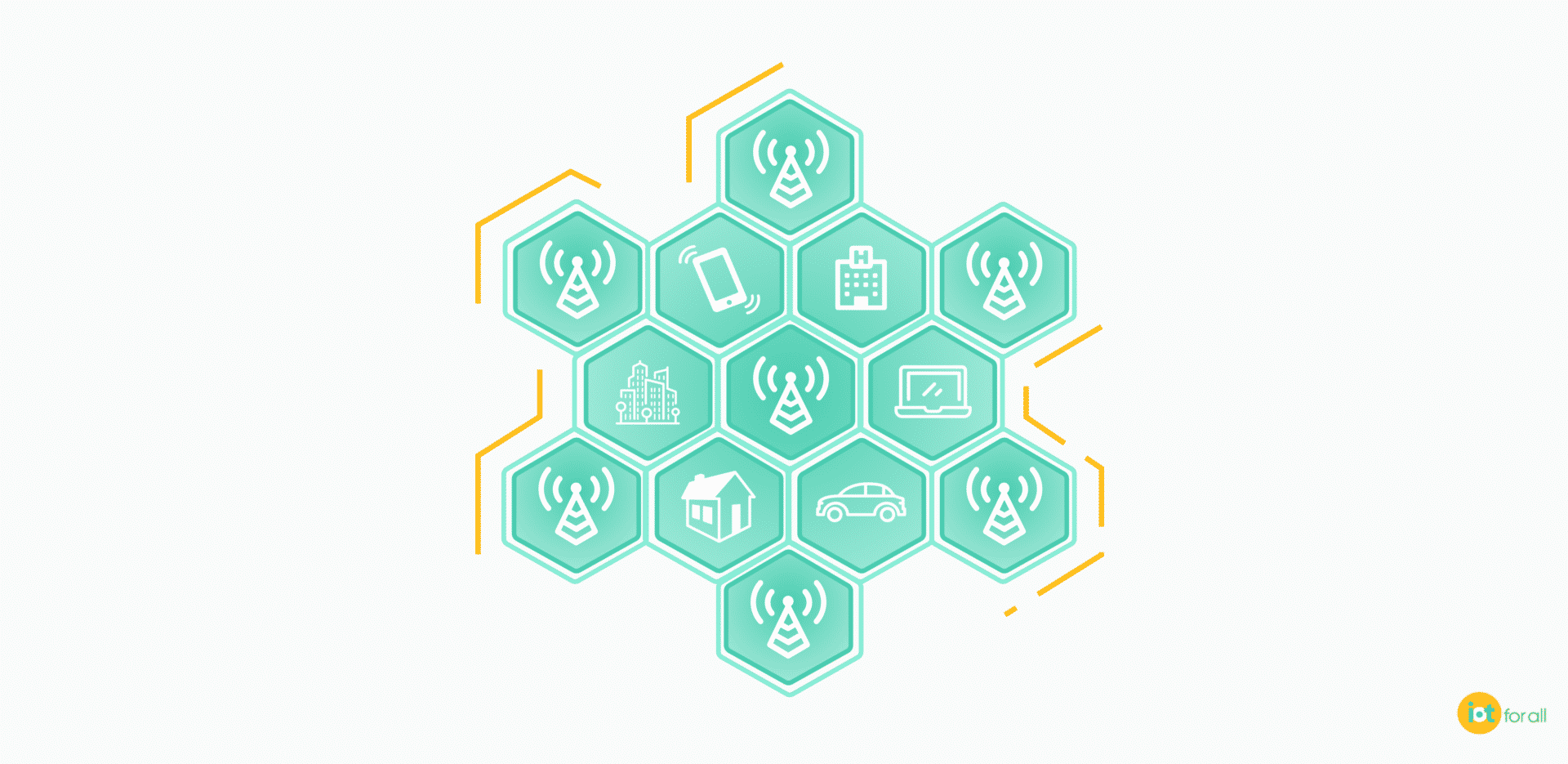
You might be unable to answer the question, “what is cellular IoT?” But I’m sure you’re familiar with the underlying technology. Cellular networks connect your iPhone to Google Maps, Instagram, and Email; they carry your voice through the air. But gone are the times when we want to connect only with our friends and family. Now, we’re also seeing the value of connecting with the physical objects around us: the streetlights, parking meters, and hospitals that occupy our everyday urban lives, or the myriad industrial applications like manufacturing and agriculture that connectivity can enhance.

What you may not know is how that same cellular technology behind your smartphone is empowering the next wave of innovation in the dawning “Internet of Things” (IoT). Ericsson predicts that the number of devices connecting to the more than 20 already-deployed cellular IoT networks is set to expand at a combined annual growth rate of 19 percent until 2023. Meaning, of the total estimated 20+ billion IoT devices connected by 2023, Ericsson expects 3.5+ billion to be cellular—specifically, over LTE and 5G and by numbers mainly in China and Greater North East Asia.

But what is “cellular IoT” and why should you expect to be hearing a lot more about it? My goal is to help you answer those two questions in non-technical, plain English—first really simply, and then in more detail.
What is Cellular IoT and Why Should You Care?
Here are the short answers:
Q: What is cellular IoT?
A: It’s a way of connecting physical things (like sensors) to the internet using basically the same stuff behind your smartphone. Instead of needing to create a new, private network to house your IoT devices, they can piggyback on the same mobile network as smartphones. Cellular IoT provides an alternative to low power, wide area networks (acronym: LPWAN) like the non-cellular LoRaWAN and Sigfox technologies, which operate in unlicensed bands.
Q: Why is cellular IoT expanding so much?
A: Cellular networks capable of facilitating massive flows of data are now widespread around the globe, so we don’t need to build any new physical infrastructure to support cellular IoT. But for a long time, cellular-enabled IoT devices used a ton of power, limiting their usefulness to applications where electricity was freely available. Now, however, new cellular-enabled sensors can transfer reasonable amounts of data across considerable distances without draining the battery. And with 5G on the horizon, the future looks great for cellular IoT.
Snapshot of Two Key Forms of Cellular IoT: LTE-M and NB-IoT
Virtually all current cellular IoT applications use one of two technologies: LTE-M or NB-IoT. The takeaway for you is that although there are important, application-specific distinctions between the two kinds of cellular IoT, generally, you choose one or the other depending upon whether LTE or GSM cellular infrastructure is the standard in your region. Only the US, Netherlands, Ireland, and Australia have national LTE coverage, while GSM is standard in many non-Western regions like Eastern Europe and Africa.
LTE-M:
As mentioned above, LTE has national coverage in the US, the Netherlands, and Ireland, with ongoing deployments and regional trials in most major countries. It’s likely that it’ll overtake GSM for cellular IoT applications. LTE-M, which stands for “Long Term Evolution for Machines,” is a network standard that allows IoT devices to piggyback on existing cell networks. With essentially just a software update, LTE-M-enabled devices can communicate with the cloud, surfing the same waves as the cat photos you’re liking on Instagram. In general, LTE-M devices are best suited to “mission-critical” applications in which real-time data transfer makes the difference—for example, self-driving cars or emergency devices in smart cities.
NB-IoT:
NB-IoT, which stands for “Narrowband-IoT,” is great for areas without good LTE coverage, or when you only need to transfer small amounts of information—for example, when using a soil sensor for smart agriculture or an energy usage monitor in a smart city. NB-IoT uses only a narrow band of the total bandwidth cell towers project. If you’re deploying in an area in which GSM is the standard cellular technology—specifically, Europe and developing parts of Africa and Asia—or, on the other hand, if you foresee needing to send only small amounts of data across the internet periodically, NB-IoT might be right for you.
5G and the Future of Cellular IoT
Despite all the hype around 5G, it’s essentially just like all the other “Gs” (i.e., generations) of the cellular internet; 5G is better, (way) faster, and stronger. While it’s merely cool to be able to stream the Superbowl LII in 4K to your VR headset over 5G—okay, fine, it’s really cool—5G is poised to transform the IoT landscape, even though it’ll likely operate in tandem with LTE and GSM cellular networks well into the 2020s.
On the industrial IoT end, ultra-secure, private 5G networks will be capable of facilitating thousands or even millions of devices in a manufacturing or logistics setting, operating at 10x the speed of existent networks.

On the consumer end, 5G could unleash the data floodgates necessary to make self-driving cars or immersive VR & AR environments a reality.
It’s an exciting time to be learning about the power of cellular IoT. Hopefully, when reading about IoT or discussing it with a coworker, you’re now able to answer that previously-confusing question—what is cellular IoT? For more on the power of cellular for IoT applications, this post will get you up to speed. And if you want to dive into a more technical understanding of cellular IoT, check out Cellular IoT Explained. And stay tuned for updates—no pun intended.





 New Episode
New Episode





 Latest IoT News
Latest IoT News







